The Saab 9000 holds a special place in automotive history, not just for its turbocharged performance, but for its ability to bring Swedish and Italian design philosophies together into one harmonious package. This car was a product of innovation, ambition, and an international collaboration that shaped the future of Saab. Andy Haslam’s latest video on his Big Car YouTube channel takes a closer look at this often overlooked executive model, shedding new light on its origins, design, and the impact it had on the industry.
You can watch Andy’s insightful video here for a deep dive into the Saab 9000 story:
Table of Contents
- 1 The origins: Saab’s response to Volvo’s expansion
- 2 Inside the Type Four collaboration: A fusion of styles
- 3 Andy Haslam on Saab 9000’s turbocharged performance
- 4 Missed opportunities: Saab 9000’s failed variants
- 5 Legacy of the Saab 9000: A misunderstood masterpiece?
- 6 Watch Andy Haslam’s full Saab 9000 video
The origins: Saab’s response to Volvo’s expansion
As Andy Haslam points out in his video, Saab’s decision to create the 9000 came as a direct response to Volvo’s move upmarket in the 1970s. While Volvo was producing larger luxury cars, Saab knew it had to compete, despite its limited budget. The company’s solution was the Type Four collaboration—a platform-sharing project with Fiat, Lancia, and later Alfa Romeo. This allowed Saab to develop the 9000 without the massive costs of building a car from scratch.
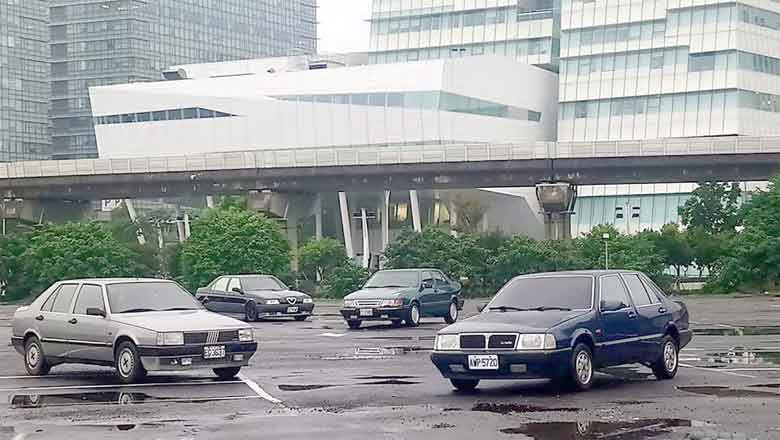
Haslam notes that Saab’s small size and limited funds didn’t stop them from thinking big. “Saab always aimed high,” he says, referencing the ambitious design goals they set for the 9000. While the car was primarily aimed at European markets, Saab’s real goal was to make a splash in North America, where Volvo was already making headway. But the big question was: could a company with Saab’s modest resources pull it off?
Inside the Type Four collaboration: A fusion of styles
As detailed in both Haslam’s video and our earlier blog posts, the Type Four project was one of the most interesting automotive collaborations of its time. The Saab 9000, Fiat Croma, Lancia Thema, and later the Alfa Romeo 164 all shared the same platform, but each car had its unique traits. Haslam describes the internal clashes between Saab and the Italian manufacturers, particularly when it came to design.
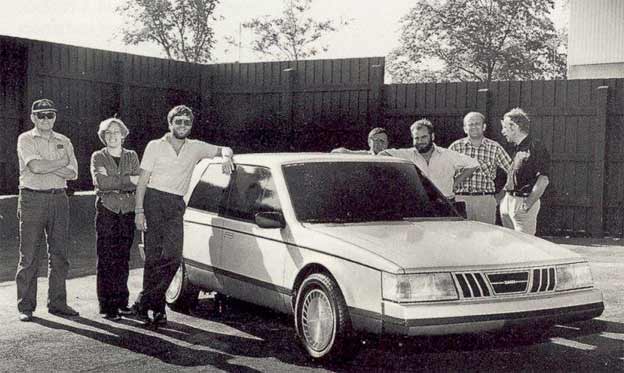
While Giorgetto Giugiaro was initially tasked with designing the car, Saab wanted something different from the Italian style. Björn Envall, Saab’s chief designer, insisted that Saab’s design ethos—building from the inside out—be maintained. As a result, the 9000’s interior became one of the most spacious and practical in the executive car segment, a feature that Haslam highlights as “years ahead of its time.”
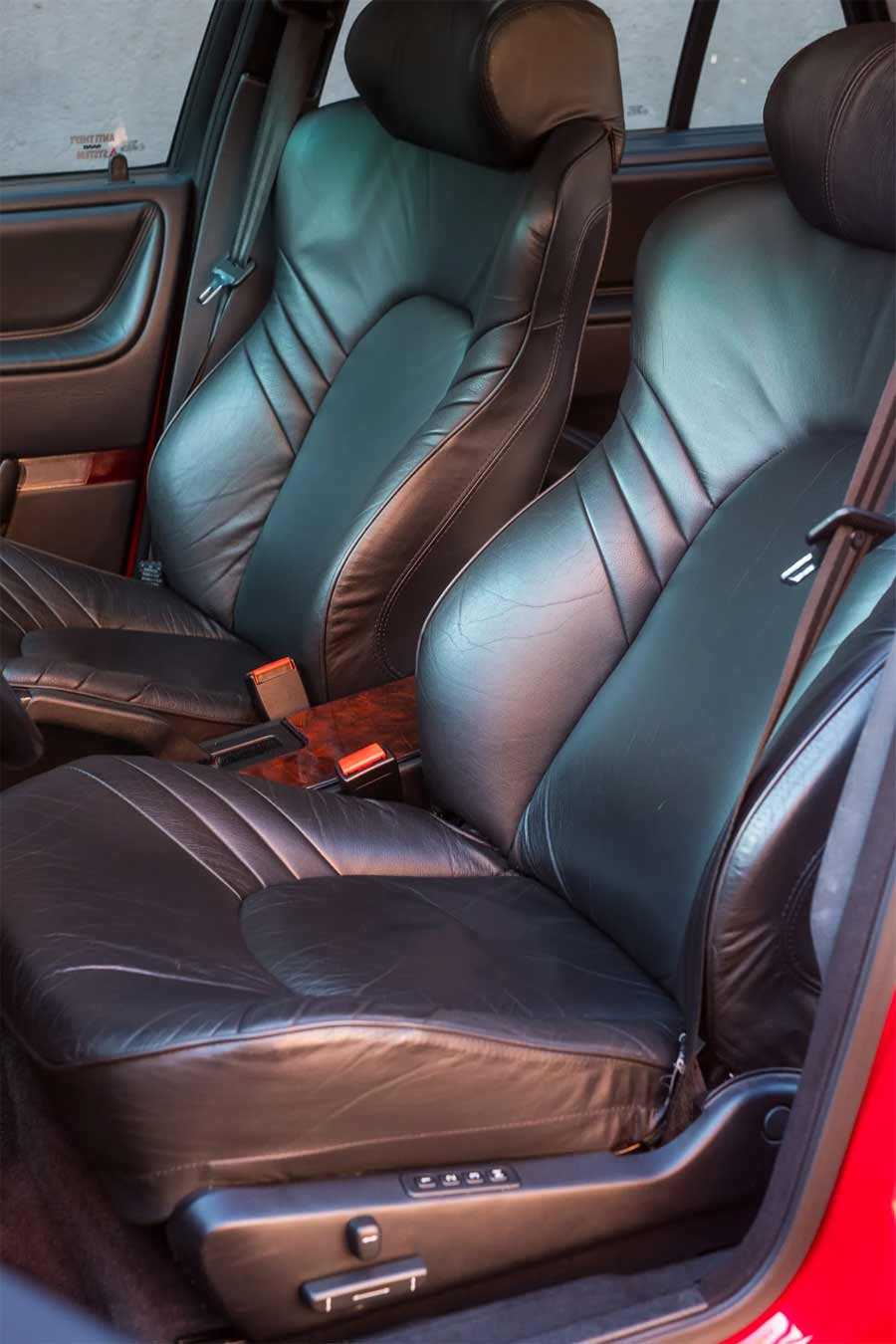
Haslam’s video points out one amusing fact about the 9000’s interior—the seats were inspired by ‘Pigs In Space’ from The Muppet Show, blending comfort with quirky charm, a true Saab trademark.
Andy Haslam on Saab 9000’s turbocharged performance
When discussing the performance of the Saab 9000, Haslam is quick to praise its turbocharged engine. The 2.0L four-cylinder turbo, a refined version of Saab’s earlier engines, gave the car the kind of power you wouldn’t expect from a four-cylinder executive vehicle. “For a car of its size, it was remarkably quick,” Haslam notes, highlighting its 0-60 mph time of just 8 seconds.
But beyond raw speed, Saab designed the 9000 for daily practicality. Reviewers at the time praised the car’s hatchback design, which made it far more versatile than many of its rivals. As Andy says in his video, “the 9000 was a car that could do it all”—it was a high-performance machine that also provided space and comfort for families and executives alike.
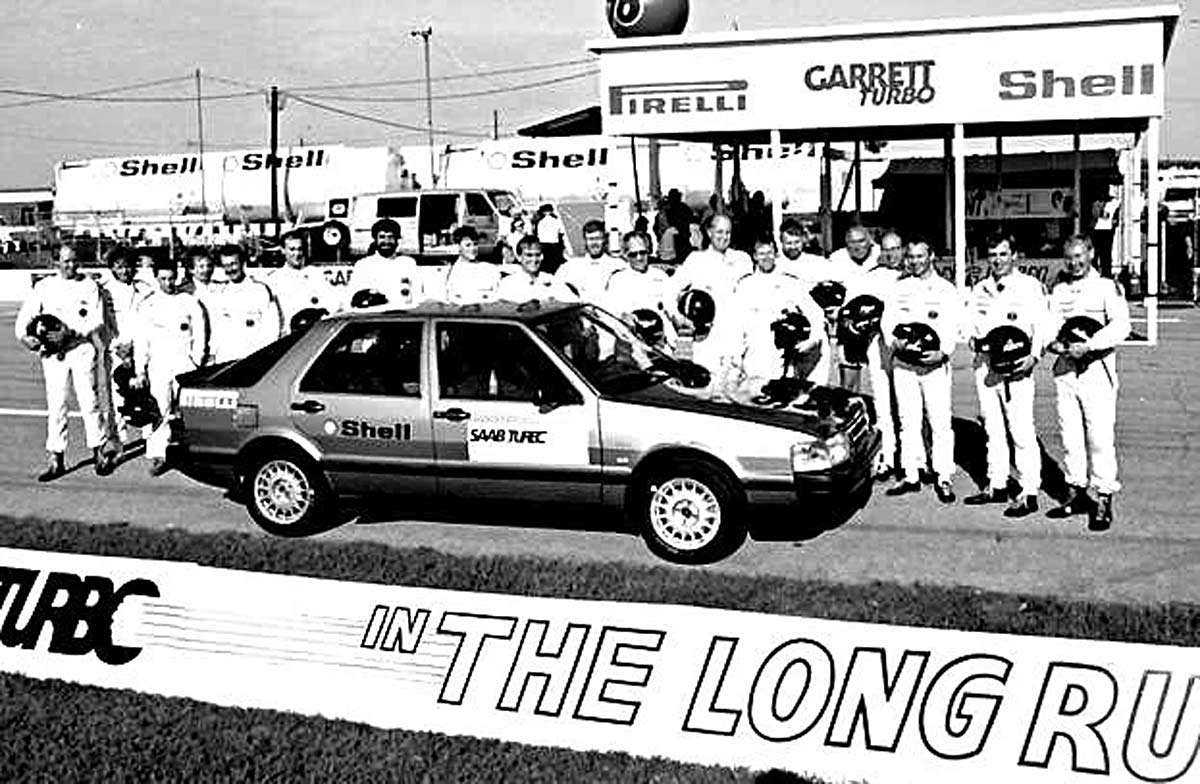
Haslam also touches on a key moment in the 9000’s history—its record-setting run at Talladega Speedway in 1986. Saab invited the FIA to witness the 9000’s endurance capabilities, with three cars each completing 100,000 kilometers at an average speed of 130 mph, setting multiple world records. This event, known as the Saab Talladega Challenge, was Saab’s way of proving the 9000’s reliability and performance on the global stage.
Missed opportunities: Saab 9000’s failed variants
While Haslam praises the Saab 9000’s success, he also delves into the missed opportunities that could have taken the car to even greater heights. One such project was the Saab 9000 minivan concept, which never saw production. Saab engineers experimented with creating a minivan version of the 9000, drawing inspiration from Chrysler’s early minivans, but the project was ultimately shelved.
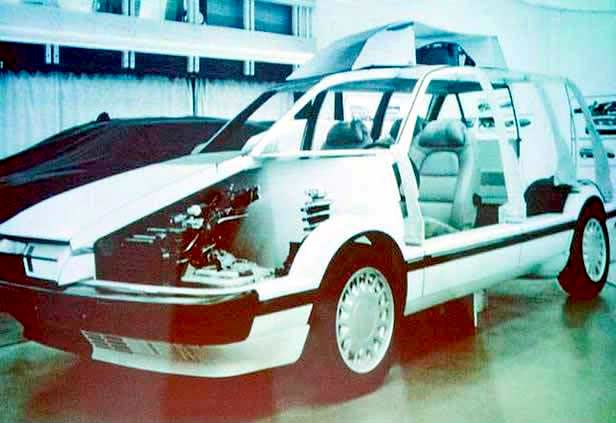
Another variant that never made it to market was the Saab 9000 coupé, which Haslam describes as a “fascinating what-if” in the history of the brand. Saab even explored a convertible version of the 9000, created in partnership with Valmet Automotive, but General Motors, which had taken partial ownership of Saab by that point, decided it wasn’t financially viable.
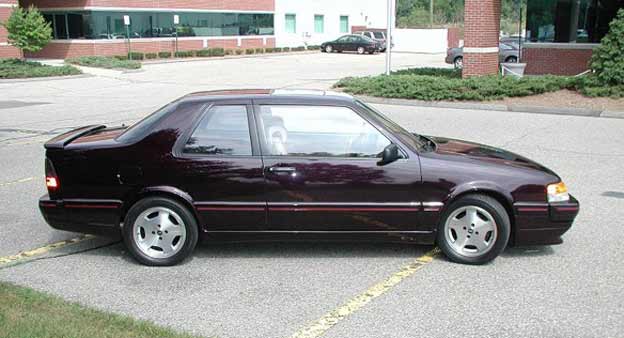
In his video, Haslam doesn’t shy away from discussing Saab’s struggles under General Motors, particularly the conflict over a four-wheel-drive version of the 9000. While Saab engineers had designed a prototype with 4WD, GM executives decided to prioritize Opel’s all-wheel-drive system, leaving Saab to abandon the project.
Legacy of the Saab 9000: A misunderstood masterpiece?
Despite its innovations and standout features, the Saab 9000 never achieved the commercial success it deserved. As Haslam points out, the hatchback design—while practical—didn’t resonate with executive car buyers who preferred the prestige of a sedan. Saab tried to rectify this by launching the 9000 CD sedan in 1988, but by then, the competition from BMW, Mercedes, and Audi had already established a foothold.
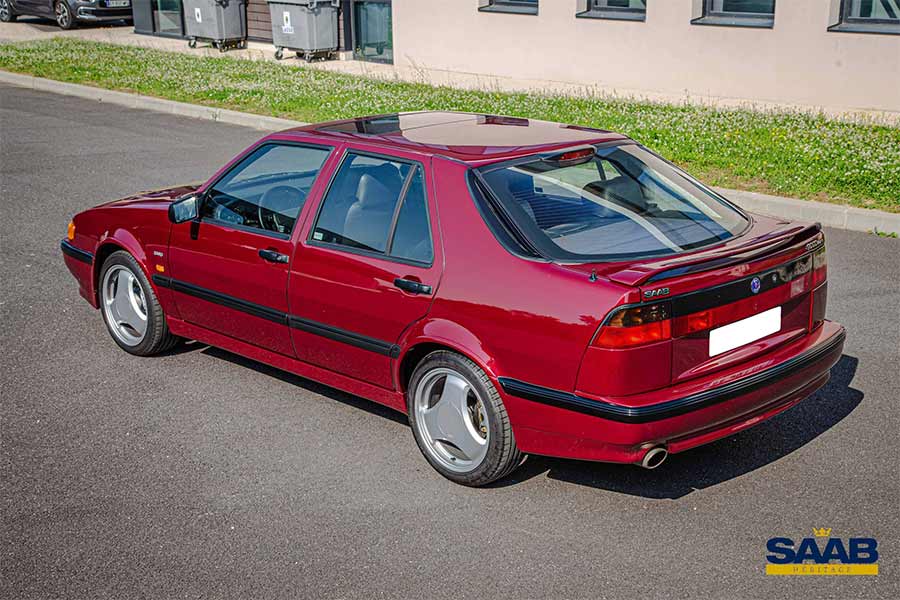
Still, the Saab 9000 remains a favorite among enthusiasts for its turbocharged power, spacious interior, and innovative design. In Haslam’s words, “the 9000 was a car that didn’t get the attention it deserved when it was new, but it’s aged beautifully“—a sentiment shared by many Saab fans who recognize the car as a turning point for the brand.
Watch Andy Haslam’s full Saab 9000 video
For an in-depth look at the Saab 9000’s development and impact, be sure to watch Andy Haslam’s video on Big Car here. His detailed analysis provides fresh insights into the car’s history and the challenges Saab faced during its development.

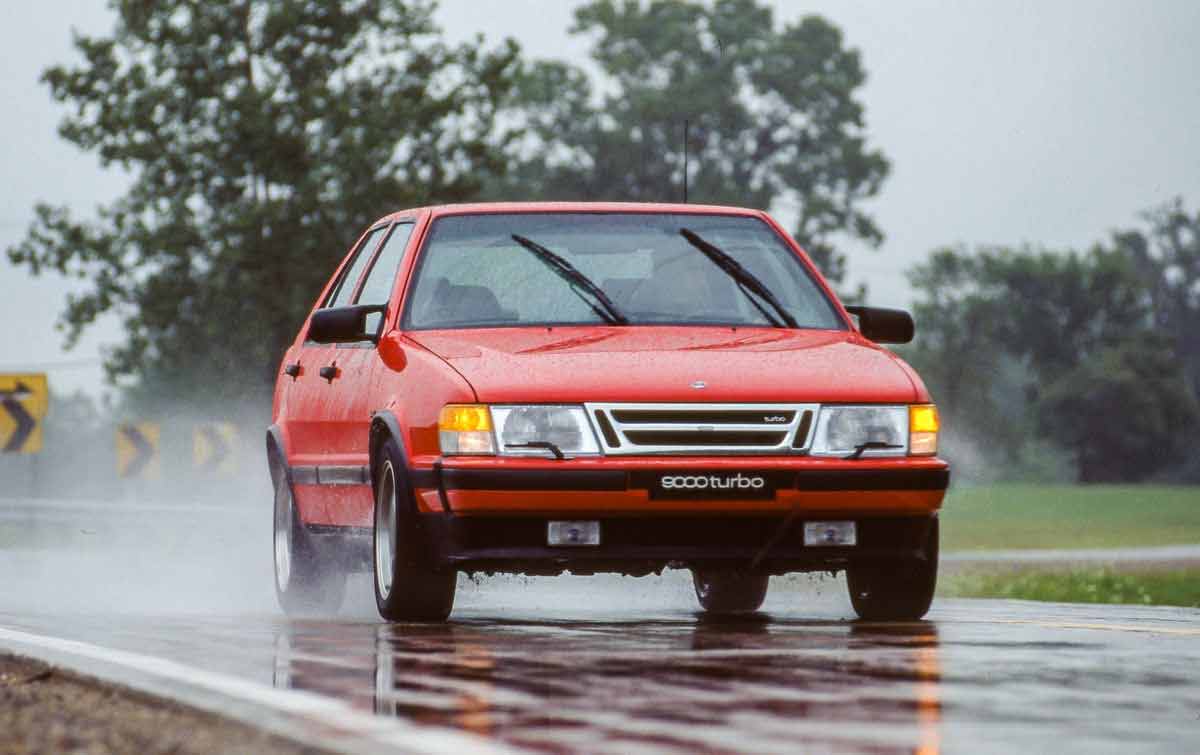




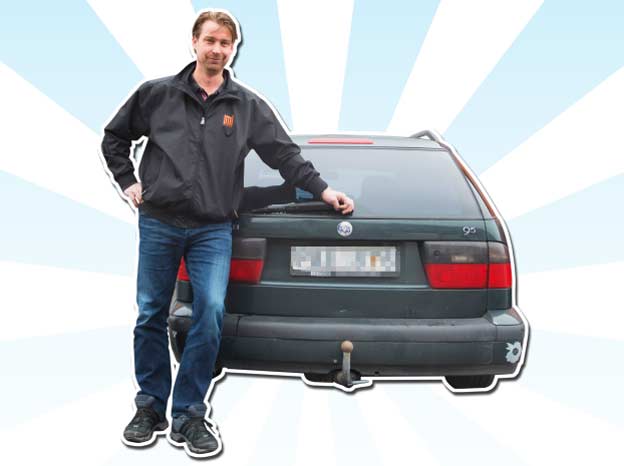

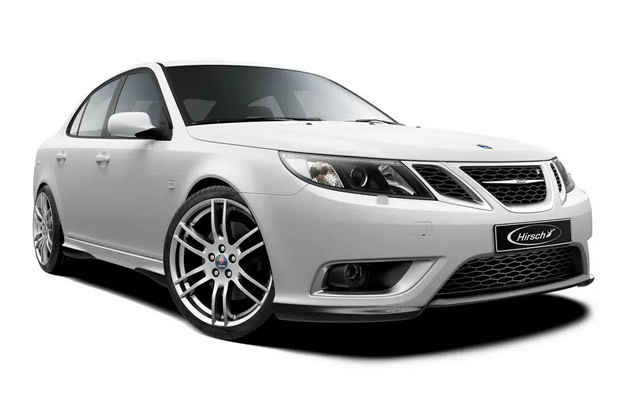



my 1998 SAAB 9000CSE … https://youtu.be/skhSzzoh9X4
favorite of the seven SAABs I have owned
still only 88,000miles
My first saab was a 92 9000 (91 vin) … brilliant car… passed it on for a 9.3 aero convertible and a 9.5 vector
9000i.e sedan, grigia, ruote in lega mille raggi, tetto apeibile, pelle nera. Auto indimenticabile per la discreta eleganza e la qualità dei materiali
I’ve had lots of Saabs but my 9000 left me a bit underwhelmed, it was only a 2 litre non turbo, and handled a bit like a boat until I fitted blisteien dampers, much prefer 900 and 95, later 93 , am I missing something?
I had a 9000 for eight years. I absolutely loved that car. It was one of eleven SAABs I owned between 1983 and 2014.
I owned a 1993 9000 with 89,000 miles on the clock. That was 10 years ago. I was the second owner. Bought it from the original female owner with a book of repair receipts. The dreaded TCS was it’s downfall….and you couldn’t buy a new 1993 Aero without it. I can’t tell you how many times that setup caused the nastiest of swear words out of me, breakdowns, towing bills, loss of money, frustration, severe anger, punching walls, etc. If you can remove that system, (and there are ways), you’d have a great car. With it in place, it was the worst car I’ve ever owned….and I’ve owned hundreds, (I’m in the car business as an A-tech/ heavy collision). I was into the car for $5400.00 when I sold it for $1200.00 just to get rid of the damn thing.. One of the happiest days of my life. 😉 Someone with computer re-programming/mapping/software knowledge of 30 year-old Swedish cars and all the parts necessary to convert to mechanical throttle will be able to sort it….it was just out of my area of expertise. Sorry for piling on, but every time I see one, it brings back horrific nightmares… Some people love them….I’m just not one of them. (PS: If it was any color other than red, I’d have just kept scrolling… but it was like seeing a ghost that scared the sh*t outa me)…….
I once had a 9000 turbo that had been tuned by Abbott Racing.
It surprised a few drivers including me and a Sierra Cosworth was equalled at 30-85 mph.
We’ve owned four new 9000’s and still have the last, a 1997 9000CSE that still has less than 100k miles on it.
We strongly prefer the 2.3 litre engine over the 2.0 litre. It’s a brilliant design that has stood the test of time. Our SAAB dealer still services our 9000 and loves it. We get a lot of compliments on it, and asked if we’d consider selling it. No chance, we intend to keep it forever.
Had two of those, one 92 and one 94 I think. Brilliant cars. Unfortunately I then needed an estate car so I had to drive someting else until the 9-5 estate was launched. That was even better
Happy memories.
I did about 400,000 miles in 9000s over 10 years !
After two Saab 900s I bought a Saab 9000 in 1989, it was the Antichrist! Total engine failure and several drive shafts replaced…bad luck, because it was actually a beautiful car
Meh. The 9000 was the beginning of the end. Hood opened the wrong way. Shaped like any old generic sedan. Basically boiled all the quirkiness out of it and paved the way for the GM-built garbage to come.
I loved mine it’s was always great to drive the higher ranking people in the Army did ask questions asa lover rank back then, pay your money take your choice was my reply as lance jack …
I have owned many 9000’s.
The early ones were good, and to be fair to GM, the face-lift model was my favourite.
I bought my wife a CSE Anniversary edition, and she still says it was her favorite car.
I owned a Silver CSE anniversary as well, and when SAAB went under, I managed to get hold of the ECU programming software and maps. I had that 2.0 Engine pushing out 240BHP with over 400nm of torque.
I Loved being part of the SAAB community in thr UKSAAB forum, and we would have meets and track days.
I have since migrated to Mercedes now, and owned some lovely classic and more modern Mercedes, as I can at least get the parts.
I had one, it wasn’t reliable at all sadly in fact none of my SAABs were and I’ve had 5. My 900 turbo handled better than my 9000. The 9000 had an incredibly short first gear which was annoying, the gear knob came off in my hand often, climate control kept breaking down. Seats were not comfortable at all. Service costs were very high
I’ve owned no less than 9 9000’s in various iterations, all were great cars. Of course, all cars need repairs at one point or another, but several I had reached the high 200K’s in mileage, before one thing or another took them out.
Still have a 1997 LPT 9K that’s a project in waiting, 2 parts cars that I’m looking to sell, and have recently acquired a 1997 9000 CSE that is mechanically and structurally in near perfect condition, thanks to a friend who spent 2 years owning and taking care of it.
Not very many good ones left out there.
And just as quick as a RS500 standard car or 4wd cossie.. But didn’t get the awareness.
9000 saab aero carlson was a beast of a yoke in the 80s.
Never appreciated them till last free year and got me a 03 Saab 9 5 saloon.. What a car man..
Ex audi vw ford trained tech 90 to 2010…
Only will drive pre 05 saab 9 5 s now or Volvo 240 GLT or 850 T Volvo that’s it.
Swedish bomb proof cars of that era… Saab and old volvos for life pre 2005 back xxx
Always wanted a 9000, but by the time I was able to buy one, I bought a new 95 Aero. Loved it until the electrics started going crazy – Still miss having a Saab
The SAAB 9000 represented the epitome of Swedish advanced engineering and Italian design. We’ve owned four new 9000’s and still have our 1997 9000CSE that we keep as a historical legacy car. The car is advanced in engineering and design all these years later. The world misses SAAB cars.
Yes, had two and would be happy with another, only if, but really I didn’t think of them as ahead or best cars they had good proportions and I’m 6’2″.
I’ve owned 6 9000s so far. Still have 2 1998 9000 CSEs, 1 for me and 1 I bought for my mother which was passed down to my son after she died. She loved the car immensely and didn’t drive it like a little old lady! They do attract idiots and egomaniacs because I keep em looking good with classic license plates. Every time I move my new neighbors go out and waste money on a new car. Not sure if it’s jealousy or envy but it keeps me laughing at petty people.